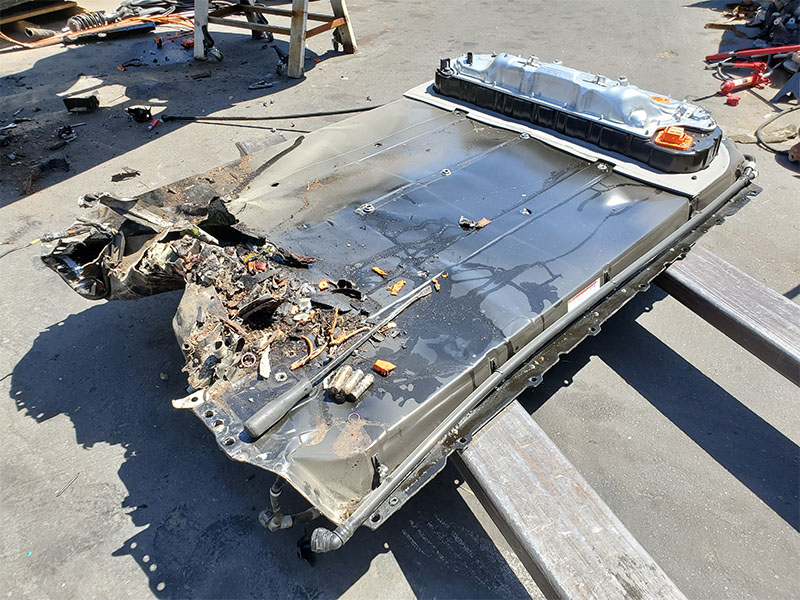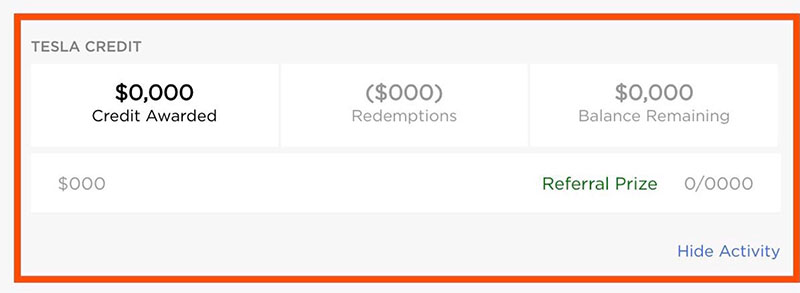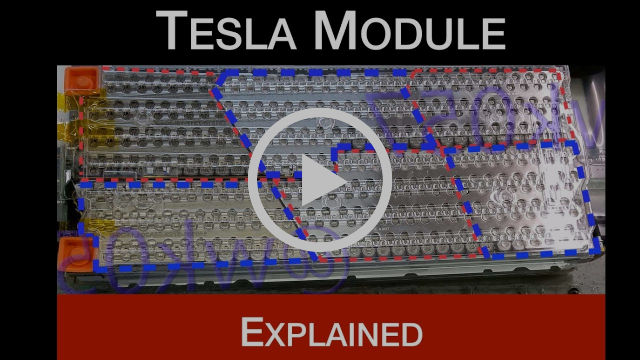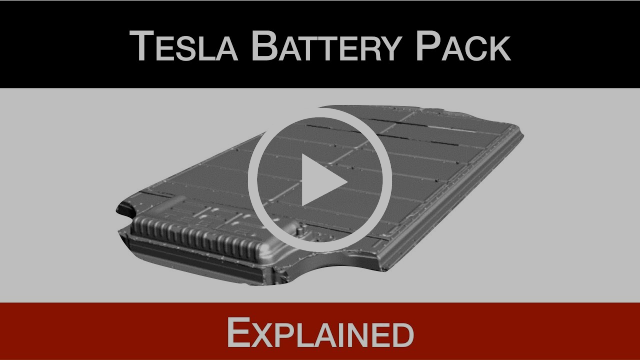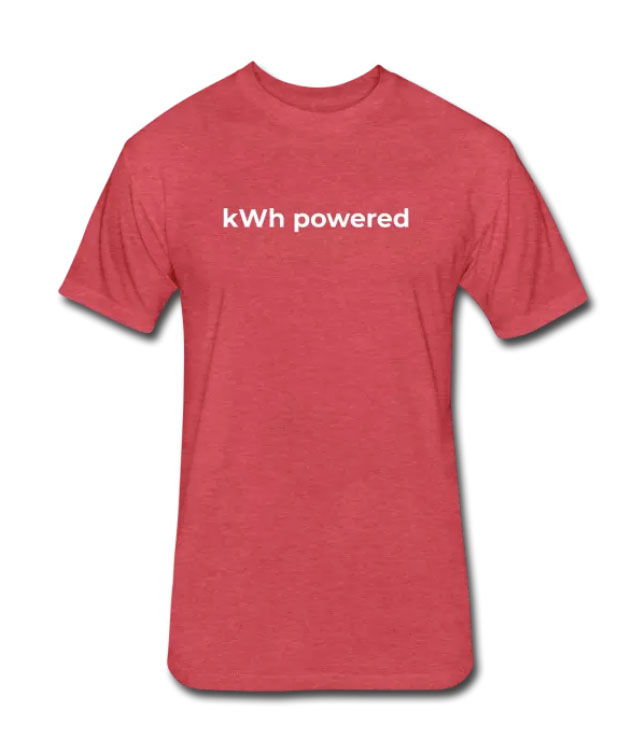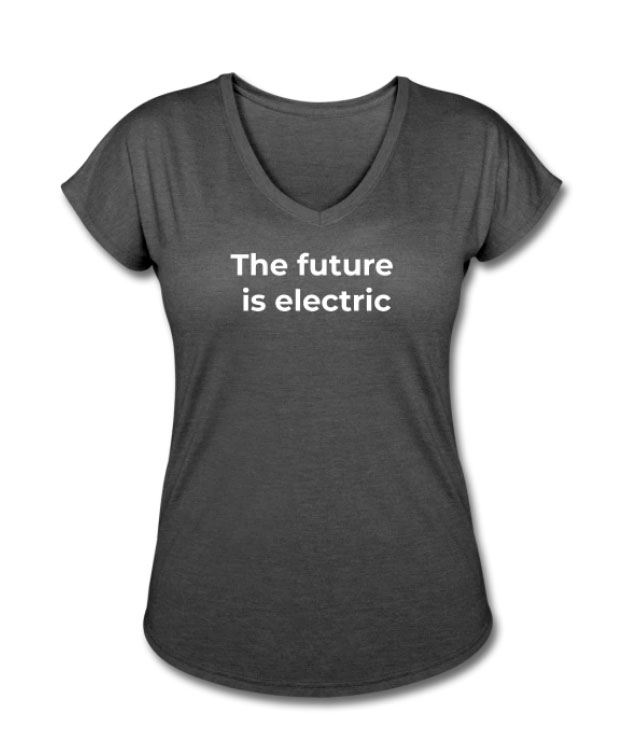Batteries
Tesla’s is on a mission to make low-cost, logn-life batteries, and its cutting-edge battery technology has been pushing the EV market during the last few years.
Elon Musk recently said (Aug. 2020) Tesla could build batteries with 50% more energy density in as few as three years.
Tesla's Battery Day is scheduled for September 22, 2020. Attendance will be limited and the event will be live streamed.
Pictures of Batteries
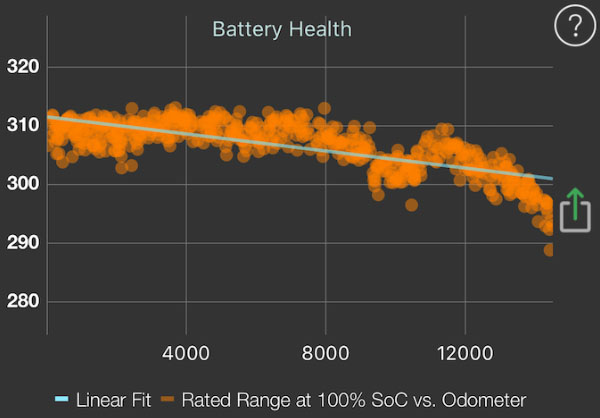
Blog posts related to Batteries
Tesla Model S Plaid
The Tesla Model S Plaid comes equipped with a tri-motor powertrain, 200 mph of top speed, over 520 miles of range, and able to go from 0 to 60 mph in less than 2 seconds. Available to pre-order since Sep. 22nd. Deliveries to start in late 2021. Starting at $139,990.
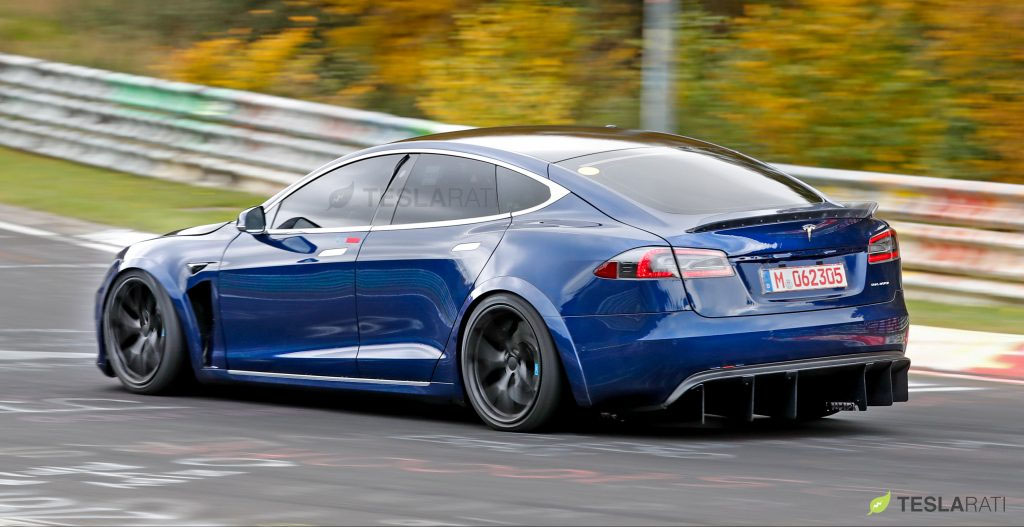
Tesla Battery Day predictions recap
Tesla Battery Day is planned for September 22, 2020. The event will host a limited number of persons in Fremont, California, and it will also be live-streamed to the public. Here's when and where to watch the Battery Day live-streaming online.
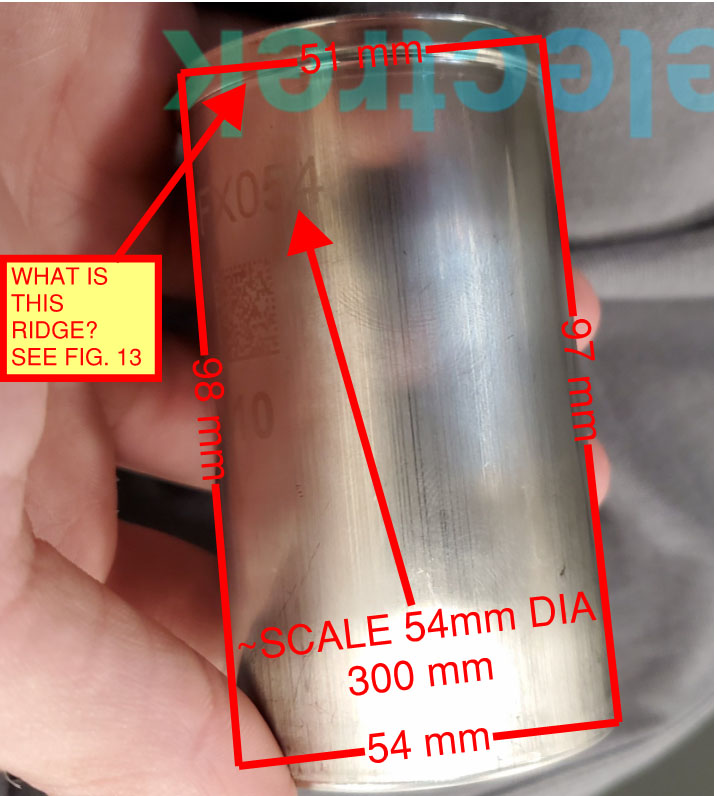
Tesla battery degradation: This is what real data tells us
In this guest blog post by Ramin, the creator of the Stats app for Tesla, uses real data to throw some light to common Tesla battery degradation questions. TL;DR: There is nothing to be worried about in the vast majority of cases.

Videos about Batteries
Past Tesletter articles
$19,000+ non-warranty battery replacement cost
One of the concerns that I hear from folks on buying an EV is the cost of replacing the battery. This owner got theirs replaced after 102,871 miles for $19k.
From issue #219'I would say it's safe to assume the Model 3 battery is fire-proof'
Yaro_S, a reddit user that rebuilds Teslas, took these pictures of the battery of a Model 3 that hit a pole at 60mph. By now, we all know that Teslas are less likely to catch fire than normal ICE vehicles, but even more so the Model 3, according to Yaro_S. “None of the cells combusted. There is one that looks like it got to a very hot temperature and started to melt but did not burn.” I find that remarkable, given the damage shown in the picture.
Read more: Reddit
From issue #71110 kWh packs and 400+ range coming for S and X?
Jason Hughes discovered some interesting bits buried inside the Tesla BMS firmware. Tesla has made changes to fit 108 cell groups and there is a ‘packid’ that states that the pack can be ~109 kWh.
Potentially, these changes come from removing the modules that as Elon stated, make an enclosure, in an enclosure, in an enclosure, and get back some space.
Read more: Twitter
From issue #99[Video] Model 3 battery and BMS signals
Very nerdy video about the Model 3 (and Y) battery pack while looking at the signals that explain how the BMS thinks.
From issue #109A first-ever Tesla teardown! Model X battery pack overview
Another great teardown by Munro Live. Take a look if you’re intrigued by the insides of your car.
From issue #290About the upcoming Battery Day in September
According to some research from Electek on the Battery Day landing page, it appears that Tesla is teasing some sort of nanotechnology ahead of the event next month. Electrek has changed the contrast and exposure for a clearer look at the lines in the background image, and a reverse Google search on the image shows that it is similar to silicon nanowires, a nanostructure that has been used to create batteries with higher performance though it has yet to be commercialized. Who else is excited for Battery Day? ☝️
From issue #126Battery Day is almost here 9/22
Battery Day is scheduled for next Tuesday, Sep. 22nd. What ‘many exciting things’ do you think Elon is referring to in this tweet? I’m so bummed I didn’t get an invite… but still excited. For when the time comes, you will find the live stream here. Of course, Elon or Tesla employees, if you want to give me an invite you can just reply to this email 😜
From issue #129Battery degradation: Effects of temperature on battery (Model 3/Y)
Interested in real-world data to determine the impact of the temperature in battery degradation? This is your video. As you will see, the improvements introduced in the Model Y 2020 are great and battery degradation in this car is even less than in previous Model 3 models. Shoutout to @teslagong and @kkvr2823 for this new YouTube series.
From issue #137Biggest Announcements from Battery Day
Tesla did not disappoint. Plans are aggressive, but realistic IMO. A good and short summary from The Verge: “The company’s moves toward eliminating cobalt in its batteries, a new Plaid powertrain for the Model S that could get to speeds of 200 mph, and a new cathode plant to streamline its battery production. And, with the new battery technology, Musk has said Tesla will make a $25,000 car.” Very proud to be a stockholder!
From issue #130Bjorn Nyland thinks fast-charging accelerates Tesla Model 3 battery capacity fade 📹
In this video, he compares his 6% drop to another Model 3 with similar mileage, but less frequent DC fast charging and found out that those lost only 4% of the initial capacity.
See more: YouTube
From issue #117Concerned about your battery degradation?
Battery Compare is an iOS app is brought to you by the creator of StatsApp, the app helps you understand how your current battery and car configuration compares to cars with the same characteristics and mileage.
See more: Apple Store
From issue #86Cybertruck battery teardown reveals wireless charging prep
A detailed teardown of the Cybertruck’s battery by Kerasoft unveils Tesla’s engineering prowess, featuring a robust structural design and sophisticated power management systems. The analysis by Autoline’s John McElroy and Kerasoft’s President Terry Wowski reveals the potential for wireless charging, a ‘wading’ mode for water fording, and innovative use of aluminum for connections. It also showcases the integration of the battery into the vehicle’s structure, reinforcing safety and enabling easier assembly.
From issue #316First look at Tesla’s new structural battery pack that will power its future electric cars
Electrek obtained the first picture of one of the very first structural battery packs ever produced by Tesla. The pack has a honeycomb structure, which is known for its strength while also being lightweight.
From issue #147Fremont made 17 Model Ys with 4680 Tech
According to Twitter user @bburnworth, Tesla has been making the 4680 cells for many months and now they are ramping up prototype production of Model Ys with 4680 Tech. This prototyping will allow Tesla to refine the equipment and methods to hit the ground running fast in Berlin in early 2021!
From issue #142FSD Beta in Ukraine
This hacker was able to install and activate FSD Beta in the Ukraine. Considering this shouldn’t be done, Tesla hasn’t done specific training for their set of traffic signs and I’m sure maps aren’t the best, I think it isn’t half bad!
From issue #180Germany forces all petrol stations to provide electric car charging
Germany has recently announced they’re planning on forcing petrol stations to provide electric car charging as well. They are committed to making the EV numbers go up and they are starting by trying to reduce range anxietyanxiety- they have identified that 97% of the reason why people aren’t buying electric cars is range anxiety. Germany is also planning on investing 2.5 billion euros on battery cell production and charging infrastructure.
Read more: Reuters
From issue #115Giga Nevada Milestone - 1 Mil Battery Packs
Giga Nevada - the first Giga Factory - has built 1,000,000 battery packs since it started operating in 2017. Good job team!
From issue #180Giga Texas structural battery pack cover
Munro got their hands on a Made in Texas Model Y and started tearing it down to analyze the changes involved in the structural battery pack. A lot of simplification in these packs compared to before.
From issue #224Here’s how much battery is drained if a Tesla is left unplugged for 32 days
Can you leave your car unplugged for a month? The article mentions a video from TeslaJoy. In the video, Joy lost only 15% of its SoC when parked straight for 32 days without Sentry Mode but with Cabin Overheat Protection on, although given the temperature in LA in December, it probably didn’t trigger.
From issue #198Hidden source code shows a new 'Tesla credit' section on the referral program page
It’s unclear what this hidden section is, maybe they extended the referral program to give folks credit to expend on Tesla services, maybe something else.
Read more: Reddit
From issue #93How a Lithium-Ion battery actually works
Super interesting and educative video about how Lithium-Ion batteries work. Worth watching!
From issue #195How battery temperature affects performance
Takeaways:
- Colder battery = less regen, power and slower charge
- Lower SOC = faster charge / better regen if cold
- High SOC = less regen / charge speed even with a warm battery
- Charging to 80% vs. 90% daily might be worth it just for the slight regen increase at lower temperatures
How big is the new 4680 battery?
3D comparison of Tesla’s newly announced 4680 batteries vs. the Model S and Model 3 ones (18650 and 2170 respectively). Just to give you another perspective.
From issue #131How long can a Tesla survive stranded on a freeway in the winter?
Last week, a few articles spread FUD about EVs and how unsuitable they are if they are stranded on a freeway in the winter. This owner ran an experiment, and in their result, their Model X used 2.4% of battery per hour, which means that the Model S can run Camp Mode for 24 hours and consume 58% of its range, pretty good if you ask me, especially if you think that newer models are more efficient in cold conditions.
From issue #198How Tesla batteries work with PhD scholar Ravindra Kempaiah
Sean Mitchell did a terrific interview to Ravindra Kempaiah. This almost two hour long interview covers topics from how to make batteries to the process of manufacturing battery cells. The interview is full of interesting material but if you are interested in a particular part of the process, Sean did the amazing job of including titles and links to the different sections of this video in the description. Thanks Sean for the great content and for making it easy to browse!
From issue #62How Tesla’s next-gen battery will change the game using Maxwell’s technology
Great in-depth explanation about what was the technology that Maxwell was working on and how Tesla could use it to revolutionize batteries.
Read more: Tesla
From issue #96Improved message for the 12V battery warning
Tesla seems to be working on improving its warning messages on the car’s UI. This one used to be a very short message without much context, but now with version 2020.40.* really provides the context needed, no need to freak out.
From issue #140Improvements around the life of the 12 V battery are coming
In reply to @teslavibes on Twitter, where the user was inquiring about warnings for the 12 V battery when it’s about to die, Elon Musk has shared that software improvements to actually extend its life and other improvements- unclear what those are- are coming soon. The 12V battery is one of the most common failures for Tesla’s, especially for early Model S and Model X.
From issue #129Join the GigaBerlin 4680 cell team
I love watching this sneak peek of the 4680 Battery Production in Giga Berlin. Beautiful, I want to watch it in a loop now 😊.
From issue #144Join the Tesla Virtual Power Plant (Beta)
The future of energy is distributed and works via solar panels and batteries in many homes. Now, with this initiative from Tesla, you can help the grid when it is in critical need of additional power: “Opt-in to the Tesla Virtual Power Plant (VPP), and Tesla will dispatch your Powerwall when the grid needs support while continuing to maintain your energy security.”
From issue #173LFP battery retrofits for older Model 3 now under warranty
Tesla has initiated a program offering LFP (lithium iron phosphate) battery pack retrofits for earlier Model 3 vehicles still under warranty, as supplies for the older nickel-based battery packs dwindle. This retrofit includes an upgraded suspension system to handle the added weight, but also brings benefits such as increased range and the flexibility to charge up to 100% regularly without compromising battery health. An exciting upside is the reported slight improvement in 0-60 acceleration times, which means a little performance boost for retrofitted Model 3s.
From issue #309M3 AWD also available on standard battery
Elon recently confirmed on Twitter that the Model 3 AWD will also be available on standard battery. Woooot?!
Read more: Reddit
From issue #21Model S 70D and a Model S P85+ comparison and battery degradation 📹
Both Model S have over 100,000 miles in the odometer and their battery degradation is only 3-4% in the case of the 70D and around 8% in the case of the P85+. Not bad! The video compares these two ‘vintage’ models in terms of how well they’ve aged.
Read more: InsideEVs
From issue #115Model S battery degradation data
According to data published by Marteen Steinburg the degradation rate is 1% / 50.000km and on average, the batteries have 91% remaining at 270.000 km (170,000 miles).
Read more: Blog post
From issue #4Model Y AWD with 4680 cells supercharging
With the battery at 9% it was pulling over 200 kW but went down fast and it kept at 80kW when the battery was at 50%. The Twitter speculation says that Tesla is testing where the limits of the 4680 are and, as they understand more, they will unlock faster charging via software.
From issue #220Model Y produced in Austin will come with the new 4680 batteries
Or so has shared Elon on Twitter. Pretty cool to see all the battery innovation arriving to the production lines already. I wonder what’s going to happen in Freemont and the new models being delivered in the US west coast. 🤔
From issue #164Model Y Standard Range with 4680s
Tons of pictures of a Standard Range Made in Austin. The new Standard Range should have an approximate range of 270 miles. For comparison, the previous Standard Range, not with 4680s, had a range of 230 miles. I wonder if this means that a future Long-Range with 4680s can be above 400 miles of range.
From issue #211NeoCharge’s Power Splitters makes adding EV charging more affordable for owners
One huge challenge for many electric vehicle drivers is home charging. Where will the vehicle charge? How fast will it charge? NeoCharge’s Smart Splitters make adding an EV charger to your home easier and more affordable. They currently have two offerings available:
- One version uses a common electrical appliance outlet to power an appliance and an electric vehicle charger
- The other version allows to power two EV chargers from a single outlet
Use promo code TESLETTER for $30 off a NeoCharge Smart Splitter.
From issue #127New cells boost Tesla Model 3 battery capacity to 82 kWh
According to the discussion on reddit.com/r/TeslaMotors, the recently refreshed Tesla Model 3 is equipped with more energy-dense battery cells (by several percent) and a total capacity of 82 kWh. The new pack would be roughly 3 kWh or 3.8% more energy-dense and apply to the Long Range version only. One would assume the same improvements will come to the Model Y LR as well.
From issue #137News for the Model S and the Model X
Greentheonly discovered a few bits pointing to new hardware coming to the Model S and the Model X imminently:
- Two new battery types in several configs, no word about the capacity yet
- Integrated inductive phone charger (Qi)
- New charge port type
- New suspension version, not a new suspension but an iteration in the one released a few months ago
- New lumbar support, maybe new seats?
- Is there an interior redesign coming? Who knows 🤷♀️ But it seems that the S and the X are getting some love for sure!
Read more: Twitter
From issue #96Pack sizes and available kWh
wk057’s investigation into the Tesla firmware revealed these as the actual pack sizes:
| Pack | Total capacity | Usable |
|---|---|---|
| Original 60 | ~61 kWh | ~58.5 kWh |
| 85/P85/85D/P85D | ~81.5 kWh | ~77.5 kWh |
| 90D/P90D | ~85.8 kWh | ~81.8 kWh |
| Original 70 | ~71.2 kWh | ~68.8 kWh |
| 75/75D | ~75 kWh | ~72.6 kWh |
| Software limited 60/60D | ~62.4 kWh | |
| Software limited 70/70D | ~65.9 kWh |
Read more: TMC Forum
From issue #8Panasonic expanding at Tesla Gigafactory
Panasonic is going to be making higher-capacity batteries with lower costs at the Giga 1 in Nevada. They are going to be adding a 14th production line earlier next year, after some construction work in the next couple of months. I’m sure we’ll know more in less than a week at Battery Day, one of the strongest rumors is that there’s going to be new battery tech coming for the Model S and the Model X.
From issue #129Precondition battery
Winter is coming and with that some rough times for batteries. Here are some tips from Tam about Teslas and cold weather.
Read more: TMC Forum
From issue #27Refreshed Model X LR will be lighter and more powerful than the 2020 model
Some info about the refreshed Model X Long Range, which seems will be lighter and more powerful than the 2020 version:
- 14% reduction in battery weight
- 13% increase in battery specific energy
- Power increased by more than 30%, equipped AC magnetic motors both front & rear
- 4% reduction in curve weight
Sandy Munro begins battery mock-up after Battery Day
In this video, Sandy gives his thoughts on Tesla’s newly announced 4680 batteries as well as the newly announced front mega casting and structural battery tray. He also mocks up about 1/4 of the current Model Y battery tray with similar sized dummy 4680 batteries.
From issue #131Sandy Munro breaks down the new 4680 Battery Pack
Sandy Munro recently recreated what he believes will be Tesla’s new 4680 Battery Pack and, in this video, he reveals the mockup and explains how the current flows through the pack. He admits that this may not be exactly what Tesla will use in its future vehicles but it could be very similar.
From issue #139Service mode now has HV battery section with a battery health test function
In version 2022.36.2, the car has a battery section in the service mode. In the new screens, you can see multiple things, including the battery health and you can run a battery health test. For the battery health test, the car will discharge the battery and then charge it to full.
From issue #237Solar batteries from recycled Model S Modules
Jason Hughes, a famous Tesla tinkerer, shared his solar batteries recycled from Tesla Model S modules. They have the equivalent cycles of driving ~250k miles and show degradation of 5.2%, with 3% of it happening in the first 2 years. Pretty good if you ask me! Note, the photo is sideways.
From issue #172Step by step battery recalibration
Twitter user @theXential explains how he recalibrated his battery, making the projected range go from 257 mi to 280 mi. Clearly, this is only the displayed number, the capacity of the battery stays the same, but if you are one of the people who care about it, follow the steps in the Twitter thread.
From issue #174Takeaways after 1 year with a Tesla Taxi
This Spanish taxi driver has shared his honest experience after a year driving a Tesla Model 3 for work. The videos are in Spanish, so here’s a quick summary:
- Saved 10k euros after 1 year and 100km/62 mi
- Charging/Gas cost: 0.5€-1€/100km vs. 12-13€/100km 115cv Diesel
- Purchase cost: 48k euros (including tax deduction) vs. 20.000€
- Battery degradation after 100 km: 3-4% (degradation happened mostly between 30,000 and 60,000 km)
- Only maintenance was changing the tires
- Only con is that not everyone figures out how to open the doors
- Why Tesla (instead of other EV): Range/ charging infrastructure and easier to homologate as a taxi
Tesla 4680 battery cell structural pack production
I love all these manufacturing videos, thank you Trev!
From issue #211Tesla and Uber team up for battery-based trip assignments
Tesla drivers driving Uber can now link their cars to the Uber app, introducing a feature that assigns rides based on the vehicle’s remaining battery range. This integration aims to prevent drivers from receiving trips they wouldn’t be able to complete without a charging stop. To enable this, drivers must connect their Tesla to the Uber app and agree to share their battery level.
From issue #269Tesla batteries and degradation
Nash from @TeslaGong joins ByteofWhy Podcast (@kkvr2823) to discuss the various elements of battery degradation as observed in the data from a Model 3 SR+ and a Model Y using Teslafi.
From issue #135Tesla battery degradation: This is what real data tells us
Ramin from @StatsTeslaApp has written this article about battery degradation backed with real usage data collected from his Tesla Stats App. He frequently gets questions like “My Tesla is only x months old and I am concerned about losing y% of range during this short period of time” and “If this rate of range loss continues, my range will be half of what it is now very quickly”, so he wanted to share what’s really going on after looking at the data.
Thank you, Ramin, for sharing your insights!
Read more: Tesletter
From issue #102Tesla battery longevity
The creator of the Stats App has written an article about battery longevity, here are some interesting bits:
- The degradation is typically more pronounced when the car is new and it levels off as the car gets older
- Battery capacity measurement is inherently noisy
- Fluctuations in max rated range are normal
Read more: Medium
From issue #93Tesla battery researcher unveils new cell that could last one million miles in ‘robot taxis’
Big news on the battery longevity front. A research partner has released a new paper on a battery cell that could last over one million miles. Elon has stated in the past that the drive unit is designed, tested, and validated for one million miles of operation but that they may need to replace some modules of the battery pack to get to that since it should last between 300,00 and 500,00 miles. Jeff Dahn - the lead researcher and someone that we featured in the past - and his team have been extensively testing these cells and they think - based on the results - that a new type of battery could power an electric car for over 1.6 million kilometers or 1 million miles.
Read more: Electrek
From issue #76Tesla begins offering Model 3 SR+ reservation holders in North America the option to switch to LFP battery
If you were waiting for an SR+ and you don’t mind the change, the range of the battery is a bit lower but in theory, you can charge to 100% without degradation, you can now switch to one of these. Take a look!
From issue #179Tesla confirms that 100% of its scrapped batteries are recycled and 0% end up in landfills
A lot of people make arguments about how dirty EVs are because batteries and their chemicals end up in landfills. In Tesla’s 2020 Impact Report, the company states that 100% of its scrapped batteries are recycled, and 0% end up in landfills. Great to see this!
From issue #177Tesla files for a near 400-mile Model Y in China
Although this would translate into 351 miles if using the EPA’s calculation, it is still a good improvement from the current 326 miles.
From issue #178Tesla Gigafactory 1: Panasonic ready to ramp up battery production to 54 GWh
Tesla is expected to start producing Model Y and Semis in 2020. With that, plus Model 3s and a bump on Tesla energy, they’re going to need all the batteries they can produce. If this is true, GF1 will be going from 35 GWh to 54 GWh, which is a lot.
Read more: Electrek
From issue #92Tesla Gigafactory VP opens up about battery production
Tesla’s Gigafactory in Nevada is currently only 30% and is already a 1.9-million-square-foot building with 5.3 million square feet of operating space on three floors. Tesla currently produces there as many batteries as the rest of the world production combined and this is key to achieve Tesla’s mission to accelerate the world’s transition to a sustainable energy and transport system. Here is an interesting interview with their VP of of Operations at the Tesla Gigafactory.
Read more: Evannex
From issue #66Tesla has configured the Model S Plaid battery pack for speed — Sandy Munro’s teardown reveals deep insights
In the analysis, Munro placed the Model S Plaid and Model Y battery packs side-by-side to explain the differences and comparisons between both. This article does a great summary of what Sandy found in the Plaid’s battery pack, which unsurprisingly has been built to deliver a lot of power at once.
From issue #223Tesla makes changes in the software that allow a maximum battery size to 205 kWh
Previously, Tesla’s software was coded in a way that the maximum battery size possible was 104kWh. Now, after an update and giving it one more bit, it can go up to 208kWh. While this doesn’t mean that Tesla is going to release a car with a battery larger than 208kWh, I think it’s more than possible that it will release one with a battery larger than 104kWh in the next months.
From issue #119Tesla Megapack selected to power the world's largest offshore wind farm
Ørsted has chosen Tesla’s Megapack for its world’s largest offshore wind farm, ensuring UK energy stability and reducing price volatility. The 600 MWh battery storage system, located in Swardeston, will store excess energy during high production periods and discharge it during peak demand, enhancing grid balance and energy security. Set to be operational by the end of 2026, is a clear sign of Tesla’s leadership in energy storage.
From issue #320Tesla Megapack, Oxnard, CA
In Oxnard, California, the community came together to advocate against the installation of a new fossil fuel-powered peaker plant. In its place, Tesla energy installed 142 Tesla Megapacks as a sustainable energy storage solution. Great work Oxnard’s community!
From issue #195Tesla Model 3 Lithium Ion 21700 / '2170' cells put to the test
Testing the internal resistance, rapid charging rate, and discharge capacity of Tesla Model 3 lithium ion cells (batteries) “2170” / 21700 made by Panasonic.
Tesla Model 3 pulls 35 miles of extra range after its LFP battery charge display drops to zero
We know that cars always have a bit of extra juice to protect the battery but also to not leave you stranded on the road if you cut it too close, but this is usually around 5 extra miles or so. In this test in a Tesla with the LFP batteries, the ones in the standard range Model 3 and Y, the driver was able to get 35 extra miles out of their battery after the display indicated no more miles left.
From issue #237Tesla Model Y structural battery is super rigid but has zero repairability
As Sandy Munro continued tearing down the Made in Texas Model Y, he keep being impressed by its engineering. One discovery the folks at Munro have made is that, according to him, the structural battery has zero repairability, which isn’t good.
From issue #225Tesla new low-cost, long-life batteries in Model 3 MIC later this year
Tesla plans to introduce a new low-cost, long-life battery in its Model 3 in China later this year or early next that it expects will bring the cost of electric vehicles in line with gasoline models, and allow EV batteries to have second and third lives in the electric power grid. Tesla is not just a car company, it’s an energy company, and this is yet another great move by Tesla in that direction.
Read more: Reuters
From issue #112
Tesla Plaid - 12-volt Lithium Battery
The 12-volt battery has historically been one of the most problematic points for Tesla. In my case, I had to have it replaced under guarantee a year or so after I got delivery of my car. In order to correct this, Tesla is now including a 12-volt lithium battery in the refreshed Model S. Here is a teardown of the battery.
From issue #189Tesla Plaid - Battery torn open
Pack’s data obtained from the BMS:
- Beginning of Life Pack Energy: 99KWh
- Nominal Energy Remaining: 32KWh
- Nominal Full Pack Energy: 95KWh
- Charge Total: 1564.13KWh
- Discharge Total: 1484.05KWh
Tesla Powerpack Module Teardown
Ingineerix got their hands on a module from a Tesla Powerpack, really cool to see what it is inside and how it works.
From issue #163Tesla rolls out improved Model S/X battery thermal management software
After a recent fire in Hong Kong, Tesla is releasing an improved battery thermal management for the Model S and Model X as a precautionary measure. While fires in Teslas happen, we have to remind ourselves that a fire in a Tesla is ten times less likely to experience a fire than a gas car.
Read more: Teslarati
From issue #60Tesla shifts battery chem for its Megapack energy storage system
Tesla is shifting to cobalt-free lithium iron phosphate (LFP) batteries. The tradeoff here is less costly but also less energy-dense batteries. The Megapack is designed to require 40% less space and fewer parts than other systems on the market. Pretty amazing what Tesla is doing to innovate in the energy space!
From issue #163Tesla to automatically setting LFP battery charge limits to 100%
We’ve seen some reports about the 12 V li-Ion batteries failing when the vehicle’s main battery was at a low stage of charge. Seems that this problem is only happening with the cars that carry LFP batteries, the batteries weren’t well-calibrated and the car thought it had some energy left when it didn’t. To solve this, Tesla is raising the charging limit in those cars to 100% and is asking owners to charge it completely to calibrate the battery.
From issue #206Tesla Virtual Power Plan
A couple of Tesla Energy Engineers, Colin Breck and Percy Link, explore the evolution of Tesla’s Virtual Power Plant and talk about how Tesla’s Autobidder software and Energy platform are designed to solve the bigger problem.
From issue #112
Tesla's 'Roadrunner' project aims to achieve a $100 per kWh battery cell
Crossing the $100 per kWh would allow electric vehicles to reach price parity with ICE vehicles. Tesla also looks to bring its battery cell production in-house and enable rapid mass production. The plans are for these new battery cells to make it to the vehicles first, and they would allow them to achieve a longer range without using more batteries. Not sure how this project will interact with Tesla’s plans to soon release a 110 kWh battery pack with over 400 miles, we shall see.
Read more: Tslatimes
From issue #101Tesla's battery degradation
We like this topic- who doesn’t- and it’s not the first time that we share battery degradation data collected from Tesla vehicles. As you’ve probably realized by this point if you own one, Teslas show little battery degradation, even after high usage, and here’s a chart comparing battery degradation over time.
From issue #143Tesla's battery pack - Technical explanation
Three part video series in which SavageStormAir explains the core of the Tesla’s battery technology, the battery pack.
From issue #5Tesla's new battery pack assembly line at Fremont
Tesla has shared new details on its new battery pack assembly line at the Fremont Factory. The new assembly line allows Tesla to mass-produce its new 4680 cells, which are designed to improve the performance and range of its electric vehicles.
From issue #264Tesla’s new structural battery pack
With the new 4680 battery cells announced at Battery Day, Tesla is going to be abandoning its famous battery skateboard design. This article provides a detailed explanation on what and why this change now.
Related to this, we’ve recently learned that Giga Berlin will use 4680 cells with the structural battery pack, and front and rear single piece castings (on top of a new paint system).
From issue #133The 'structural' battery packs are actually removable and replaceable
When Tesla first announced their ‘structural’ pack there was a lot of chatting about if it wouldn’t be replaceable or repairable. Well, the now free-to-access service manuals confirm that (of course) it is.
From issue #217The pack IS the floor
With the new structural pack, the top of the battery pack is the floor of the car and the seats are mounted directly on top of it and the chassis is lifted on top.
From issue #185Universal battery pack coming to Model 3/Y soon
What does ‘universal’ mean? Basically, Tesla is going to update the Model 3 production lines in the US passing on the Model Y battery manufacturing improvements and eventually incorporating the Model Y heat pump in the Model 3 as well. No timelines have been shared yet.
From issue #122
